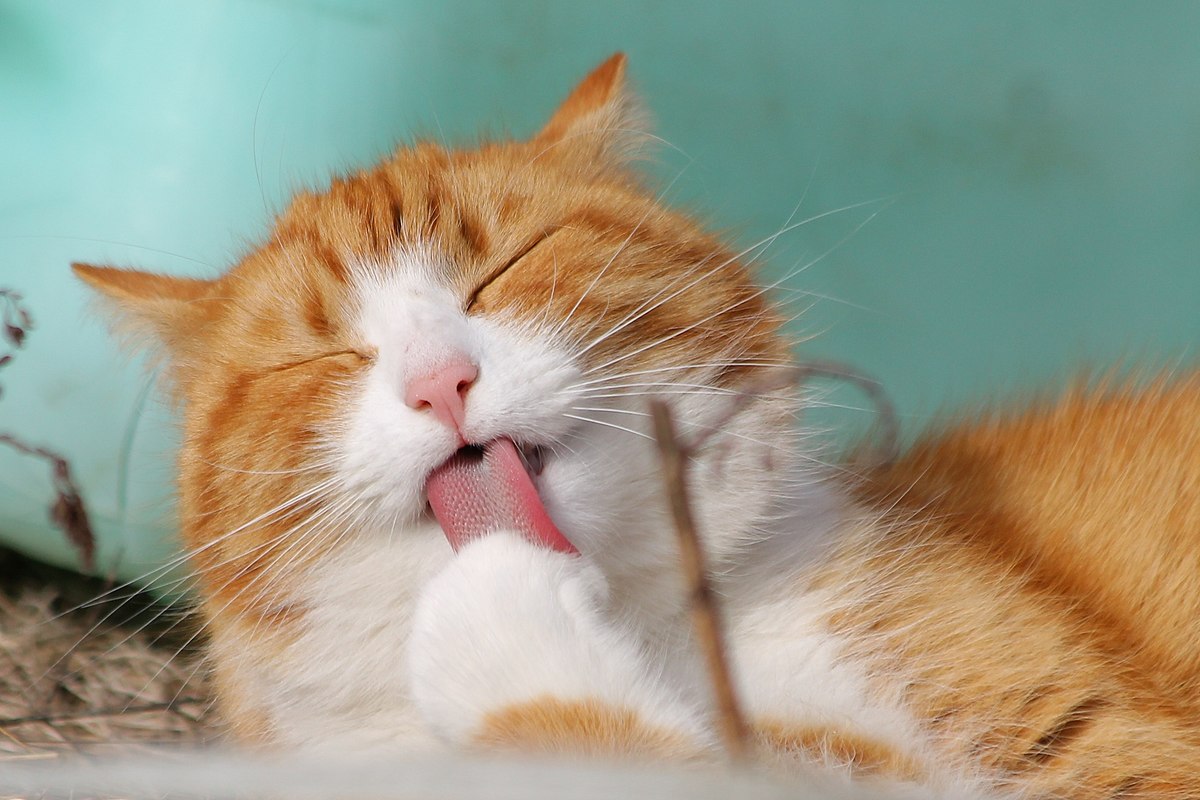Why Does My Cat… Pull Her Hair Out?
Published on May 05, 2015

For most cats, grooming is near the top of their daily to-do list. In fact, cats generally spend about 30 to 50 percent of their waking hours preening themselves. But some cats may take grooming too far, yanking entire tufts of hair out or literally licking themselves bald in spots. Because some cats are “closet groomers,” you may not even witness your cat in the act. Instead, you may find clumps of hair on the carpet and upholstery, alopecia (patches of hairless skin) or an uptick in hair balls when your cat attempts to swallow the evidence. Though it might be tempting to write the behavior off as a strange neurosis, that’s rarely the case. “Most cats who pull their hair out have a medical reason,” Dr. Valerie Fadok, a board-certified dermatologist at North Houston Veterinary Specialists in Spring, Texas, says. “Behavioral problems are much less common.”
Underlying Medical Issues
So what would cause a cat to pluck out her own coat? “Overgrooming in cats is usually a sign of itch,” Dr. Fadok says. An itchy cat may respond by scratching, but in other cats, itchiness can manifest as hair pulling and licking. Pinpointing the cause of the itch, however, can be a challenge. Most veterinarians start by performing a physical examination, which includes looking for external parasites, such as fleas, mites or lice. Sometimes specific tests, such as a skin scraping, may be recommended to check for some of these parasites. In cats with a flea allergy, exposure to saliva from even a single fleabite can result in excruciating itchiness. Because many cats are fastidious groomers, it’s relatively common for them to ingest all the fleas on them and the flea dirt. So even if you can’t find any evidence of an infestation (and, yes, even indoor cats can get fleas), your veterinarian may recommend a trial with a parasite control product. If the signs disappear, parasites are presumed to be the most likely culprit. Underlying bacterial or fungal infections in the skin can also cause itching. Your veterinarian may perform skin cytology (looking at cells under a microscope) and cultures, and treat as needed. Finally, allergies to environmental elements, such as dust mites, pollen and mold, or in other cases, food allergies, can lead to itchiness. Your veterinarian may recommend allergy testing to pinpoint the cause of environmental allergies or a food trial with a limited-protein diet or a hydrolyzed protein diet, in which the protein is broken down into pieces too small to be recognized by the immune system (so it’s less likely to trigger an immune reaction).
Potentially, a Sign of Pain
Occasionally, cats may overgroom in particular places where they may feel pain. For example, a cat with cystitis, an inflammation of the bladder, may focus her grooming attention on her abdomen. Another cat with an anal gland infection may groom excessively in that area (under the tail). Or an arthritic cat may lick the fur off areas around painful joints.
Compulsive Behavior
Less commonly, cats with a condition called psychogenic alopecia may pluck out their hair and groom to excess because of a behavioral issue. Often, the problem is triggered by stress or anxiety brought on by changes in the cat’s environment, such as a new baby, workmen in the house, other cats exploring the yard or even boredom. For these cats, grooming may be a comforting way to help relieve stress. But behavior is rarely the main cause of hair pulling. In fact, a study examined 21 cats who had been tentatively diagnosed with psychogenic alopecia. Of those cats, the vast majority — 76 percent — were actually found to have an underlying medical condition causing itchiness, while only two cats, or 9.5 percent, truly had a behavioral problem. “Because compulsive behavior is less common,” Dr. Fadok says, “a medical workup is critical.”
A Positive Outcome
Once underlying medical or behavioral problems are identified and addressed, hopefully, your cat will spend less time grooming and have more time for that other favorite feline pastime: napping.
The Importance of Cat Health Insurance
Your cat health insurance policy can help to offset unexpected treatment costs. These costs may include veterinary visits, prescription medications, or procedures such as imaging or surgery.
Find a personalized plan for your cat by using the insurance finder below:
More on Vetstreet:





